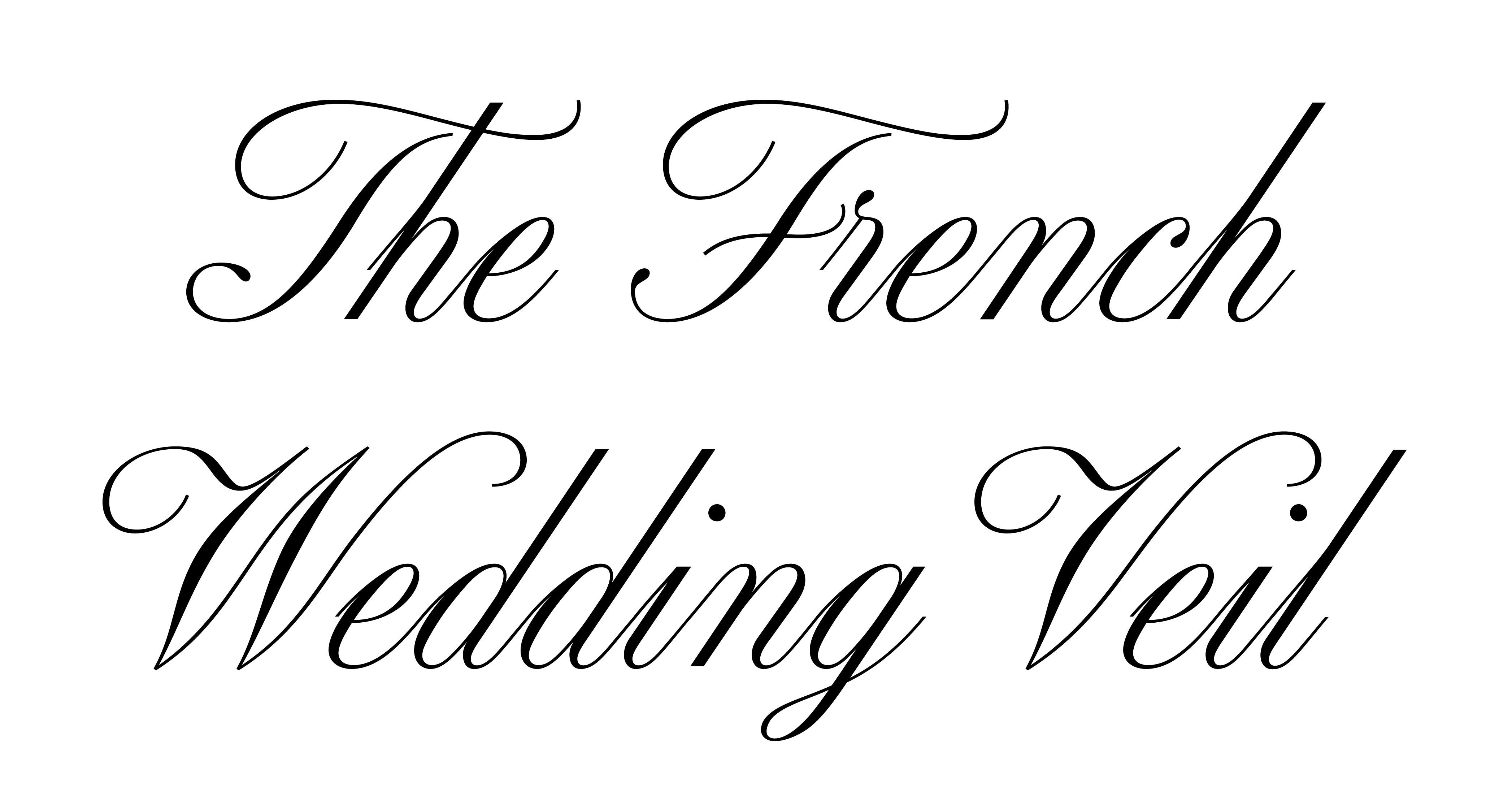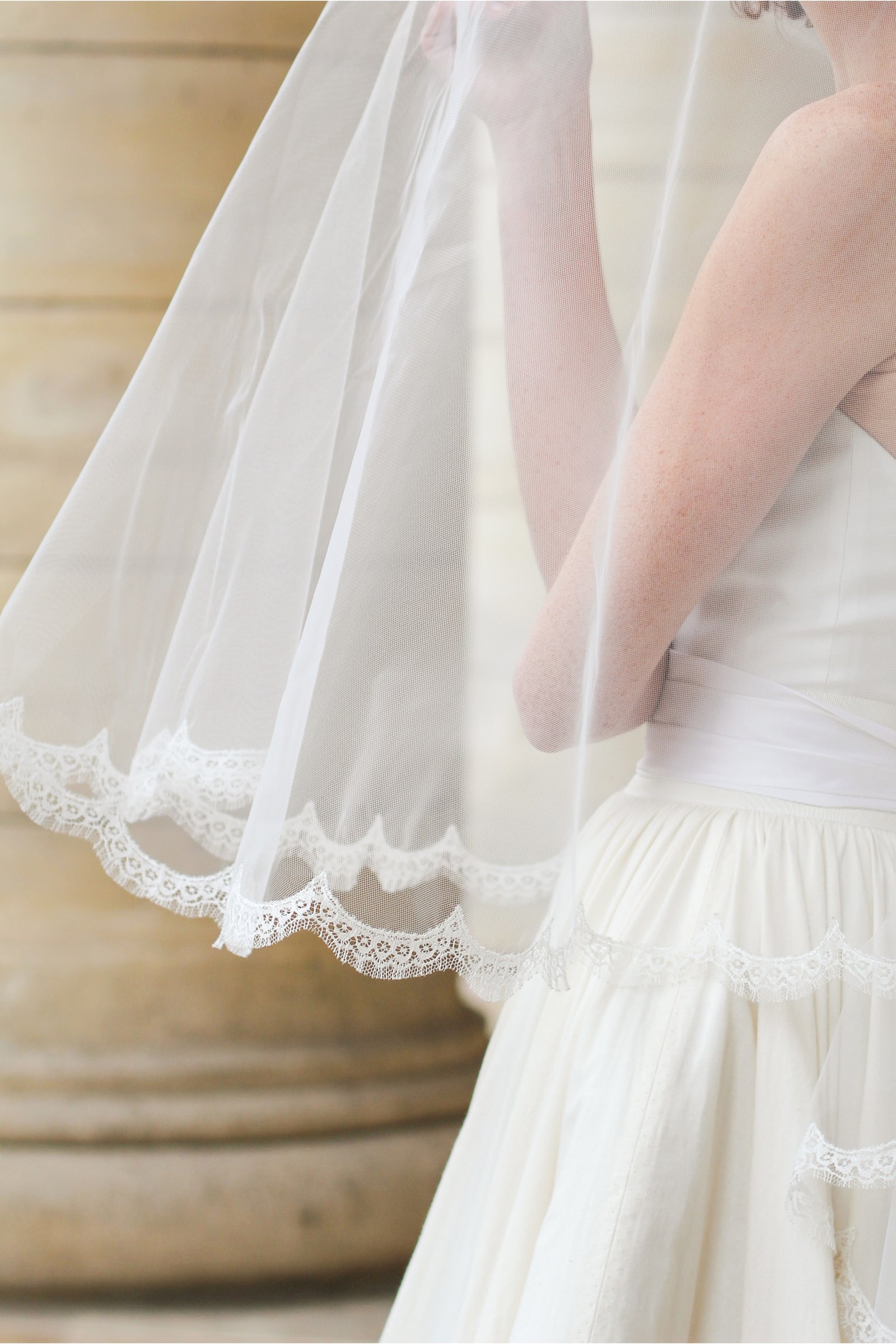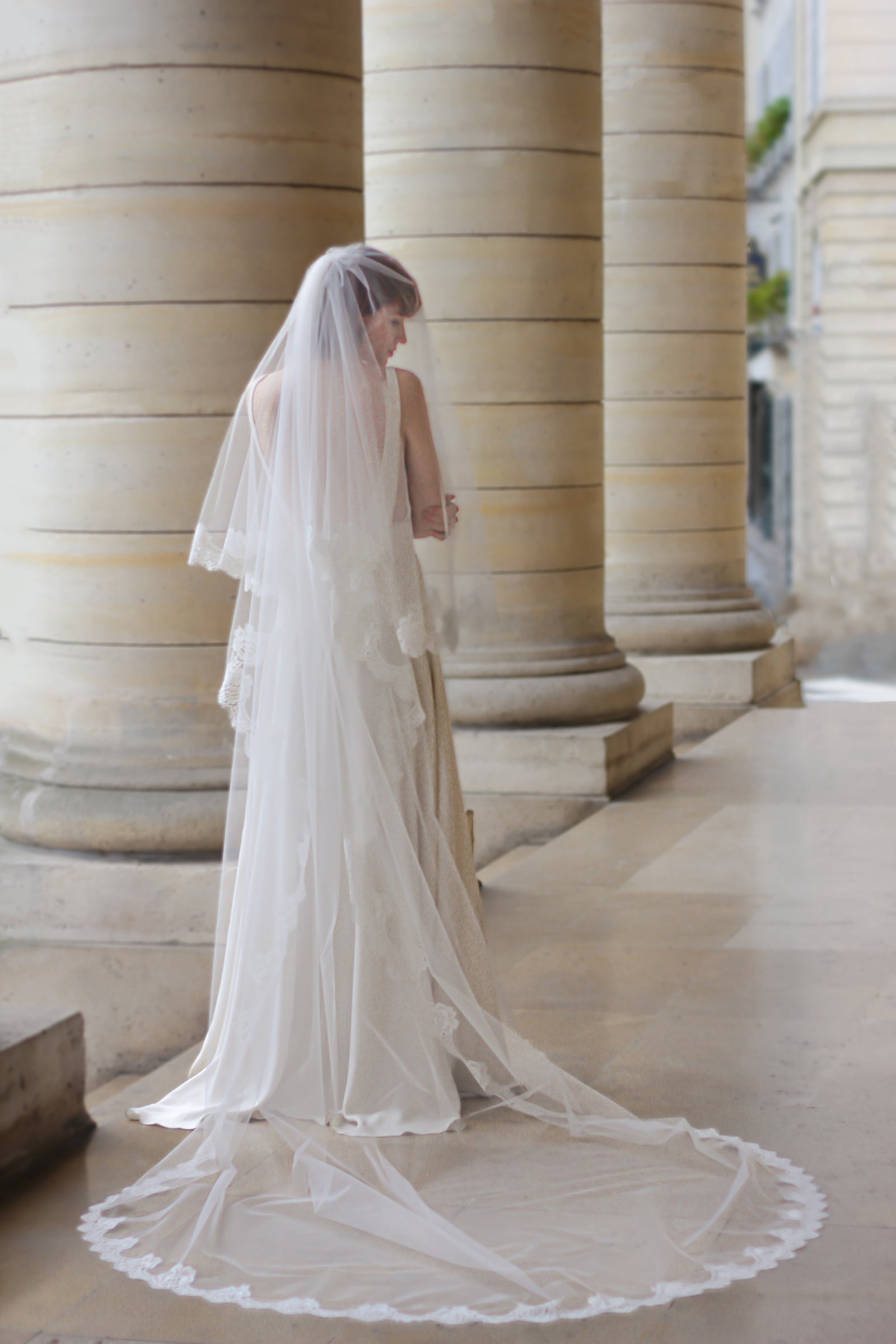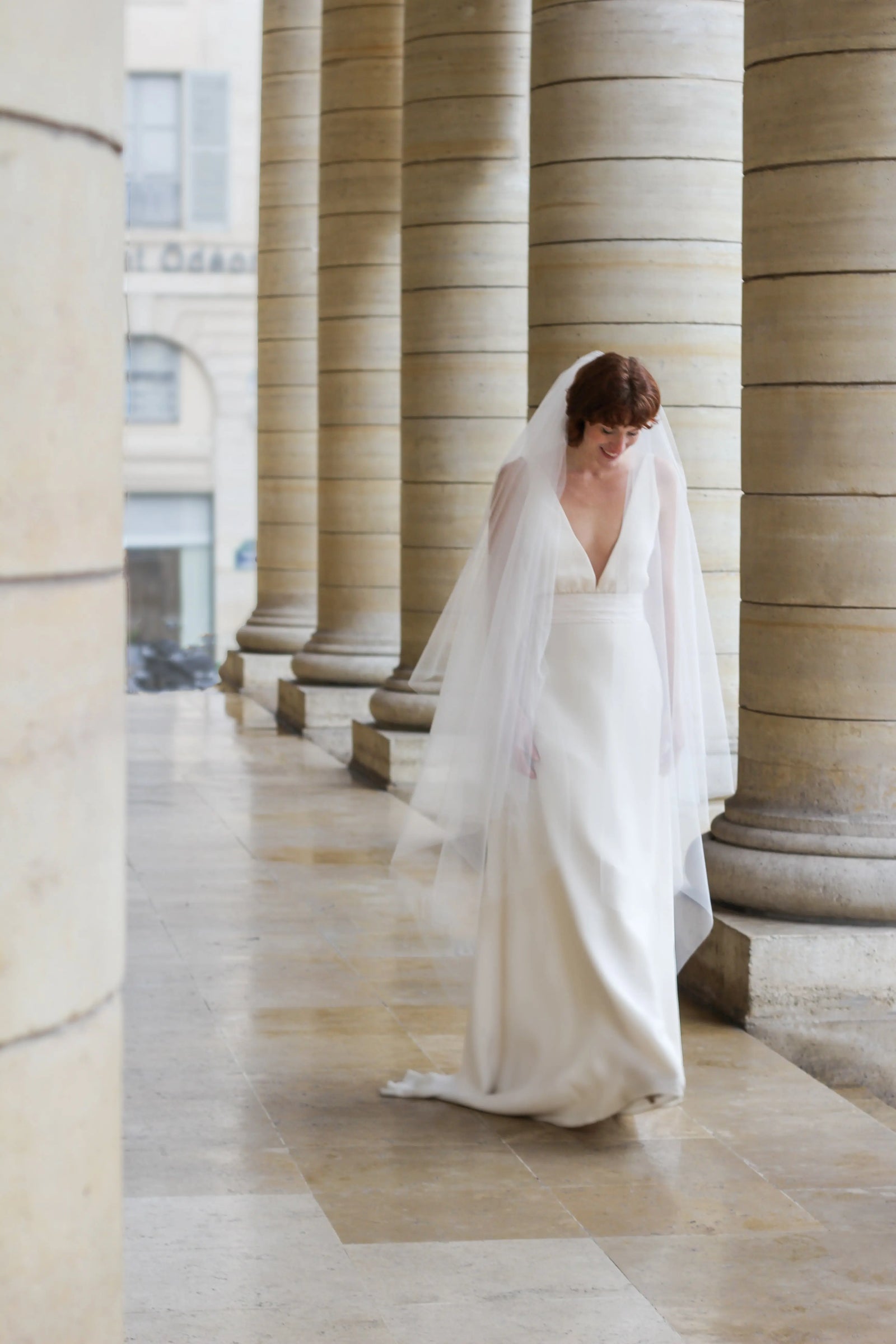How to Choose the Perfect Bridal Veil for your Wedding Day?
You’ve found your dress: now it’s time for the final touch that transforms you from bride-to-be to breathtaking.
The wedding veil is more than an accessory: it’s the finishing touch that brings your entire bridal look together. It adds elegance, tradition, and a sense of occasion that’s hard to replicate. In this guide, we’ll walk you through everything you need to know to choose the perfect veil for your wedding dress with confidence and grace.
From understanding veil lengths and how they enhance different silhouettes, to matching your veil to your gown’s fabric, style, and neckline - every detail matters. We’ll also explore how your body shape, wedding setting, and even the season can influence your decision, whether you’re planning a breezy beach ceremony or a winter château celebration.
Choose the Right Veil Length and Style
The veil’s length plays a major role in defining the style and mood of your bridal outfit. Here are the main options:
- Short Veil: Light and practical, it works well for minimalist gowns or intimate weddings.
- Mid-length Veil (Fingertip or Floor-Length): A balanced and versatile choice that suits most dress styles.
- Long Veil (Chapel or Cathedral): Creates a dramatic, majestic effect, especially beautiful for formal ceremonies and gowns with a train.
Your ideal veil length will depend on your dress cut, body shape, hairstyle, and the tone of your celebration. But beyond length alone, different veil styles can also transform your bridal aesthetic :
- The Mantilla Veil is an oval-shaped lace veil draped over the head and often secured with a comb. It’s a beautiful choice for traditional or romantic ceremonies.
- The Blusher Veil has a short layer that can cover the face during the ceremony and be lifted afterwards — or worn flipped back from the start for a light, layered look.
Each type of veil creates a different silhouette, allowing you to find the perfect match for your wedding dress and vision.
Match the Veil to Your Dress
The veil should complement your gown, not compete with it. Here’s how:
- Embellished Dress (lace, beading, embroidery): Choose a simple, sheer veil to keep the look harmonious.
- Want to highlight a dramatic back? Go for sheer tulle without heavy embellishments.
- Minimalist Dress: You can go for a more ornate veil with lace trim, embroidery, or even delicate appliqués.
- Color: Make sure the veil matches the tone of your gown. At The French Wedding Veil, we use a natural white tulle that pairs beautifully with silk and ivory dresses.
Different dress shapes pair best with specific veil lengths and styles:
- Ballgown: Lace Cathedral Veil for drama
- A-line: Long with a Delicate Lace Edging to balance the flare
- Mermaid or Fit-and-Flare: Cathedral to highlight curves
- Sheath or Slip Dress: Chapel, or Minimalist Fingertip
- Short Dresses: Floor-length Sheer Veil to match scale
Pro tip: Check where your veil ends in relation to key dress features. Avoid cutting across a statement waist or embellishment line.
Consider Your Body Shape
The right veil doesn’t just finish your look—it can subtly enhance your silhouette. By choosing a style that complements your frame, you create a sense of proportion and harmony from head to hem.
- Petite to average height: A floor-length veil or fingertip style can add height without overwhelming your figure. Avoid veils that are too voluminous or ornate, which might weigh down your frame visually.
- Tall brides or long trains: Embrace dramatic lengths. A cathedral veil enhances your natural height and pairs beautifully with long trains. You can also play with layered or textured styles.
- Curvier silhouettes: A long, softly draped veil creates a fluid, vertical line that flatters your curves. Try to avoid veils that cut across your widest point unless balanced by strong dress structure.
- Broad shoulders or full bust: A drop veil or light mantilla helps soften the neckline and brings focus downward, adding elegance around the shoulders and chest.
- Slim or athletic frames: Add volume and softness with a romantic lace veil or floral appliqués. These details create curves and visual interest—especially when paired with a minimalist gown.
Ultimately, it’s about finding balance between your veil, your dress, and your natural proportions. Try on different lengths and shapes: you might be surprised by what makes you feel most confident.
Think About the Setting and Season
The atmosphere of your wedding day—its location, weather, and time of year—can all influence your veil choice. A well-matched veil should feel effortless, elegant, and aligned with your surroundings. Here’s how to choose accordingly:
- Outdoor or breezy venues: Choose lightweight veils made from soft tulle or English netting. Shorter veils are easier to manage and less likely to lift in the wind. For added security, use discreet pins or combs to hold it in place.
- Church or formal settings: Traditional venues with long aisles and architectural detail call for dramatic silhouettes. A cathedral-length veil or a lace-trimmed mantilla adds presence and pairs beautifully with a grand entrance.
- Warm-weather weddings: For summer or tropical ceremonies, choose a breathable style like a simple tulle veil that won’t trap heat or feel heavy against your back.
- Winter or cooler climates: Embrace richer textures such as lace appliqués or multilayered tulle. These veils pair well with structured fabrics like satin or mikado and add visual warmth to your look.
- Time of day: Morning weddings suit lighter, sheer styles. Evening events can carry more formal options—think shimmer, embroidery, or long flowing veils that catch the golden hour light.
Let your veil work with your setting—not against it. With the right length and material, it will move beautifully with you and enhance the mood of your celebration.
Wearing Your Wedding Veil with Accessories
Beyond the veil itself, consider how it pairs with your bridal hair accessories. A simple veil allows ornate pieces like an embellished comb or a tiara to shine. If your veil features significant details, opt for more understated hair jewelry.
For intricate updos, a veil attached underneath the bun can create a beautiful, layered effect, while flowing styles often pair well with veils secured with a comb or pins. Ultimately, the perfect combination harmonizes with your chosen wedding hairstyle and accessories, creating a cohesive and stunning bridal look.
Bonus tip: Book a veil trial with your hairstylist. This gives you the chance to test your look ahead of time, refine the placement, and ensure your veil feels secure and comfortable with your hairstyle.
Where to Shop for Your Wedding Veil
Whether you opt for a ready-to-wear design or a custom creation, it’s worth investing in quality. For brides seeking luxury and craftsmanship, The French Wedding Veil offers exquisite, handcrafted veils that elevate your look with timeless beauty.
Still wondering how to choose a wedding veil that brings your entire look together? At The French Wedding Veil, we make it easy to choose the perfect bridal veil with timeless elegance. Contact us for more guidance.
Frequently Asked Questions About Wedding Veils
Q: How do I choose the right veil length for my dress?
The right length depends on your dress silhouette, train length, and the formality of your wedding. Shorter veils (like elbow or fingertip) work well with simpler gowns or intimate weddings, while cathedral veils add drama and elegance for formal settings. Try to match the veil’s endpoint with a natural line in your dress—like where the skirt flares or the train begins.
Q: Does my veil have to match the color of my dress exactly?
Not necessarily, but it should complement it. Most veils come in shades like bright white, natural white, ivory, or champagne. Aim for the same undertone. For example, ivory pairs best with warm-toned gowns, while bright white suits cool-toned fabrics like crisp satin.
Q: Can I wear a veil with short hair or natural curls?
Absolutely. Veils can be worn with any hair type or length. You can anchor them with discreet pins, a comb, a headband, or even a bridal crown. Talk to your hairstylist during your trial to test different placements.
Q: What is a blusher, and do I need one?
A blusher is a short layer of veil that covers the face as you walk down the aisle and is lifted during the ceremony. It adds a traditional touch, but it’s optional. You can wear a blusher flipped back from the start or skip it altogether depending on your preference and ceremony style.
Q: Will a long veil be difficult to manage on the wedding day?
Not if it’s made well and attached securely. Many brides wear long veils for the ceremony and photos, then remove them for the reception. Lightweight fabrics like tulle flow easily and won't feel heavy. A loop or bustle point on your gown can also help if you're concerned about movement.
Q: How early should I order my wedding veil?
For made-to-order or designer veils, order 2–4 months before your wedding to allow time for production and shipping. If you're buying ready-to-ship, still aim for 4–6 weeks ahead in case you want a trial with your hair and makeup.
Q: What veil styles are best for outdoor weddings?
Outdoor weddings benefit from veils that are lightweight and less likely to blow around—like fingertip or elbow-length tulle veils. Use extra pins or a secure comb if you're worried about wind.
Q: Can I wear a veil and a headpiece or tiara?
Yes! Just make sure the veil complements your accessory. Place the veil either beneath or above your headpiece depending on your hairstyle and how much emphasis you want on each element.
In Conclusion
Choosing your wedding veil is a chance to highlight your dress, express your personality, and embrace a beautiful tradition. Take your time, try different styles, and trust your instincts—because when you find the right one, you’ll feel it.
For more tips on choosing your perfect veil, read our Wedding Veil Guide on The Knot!
